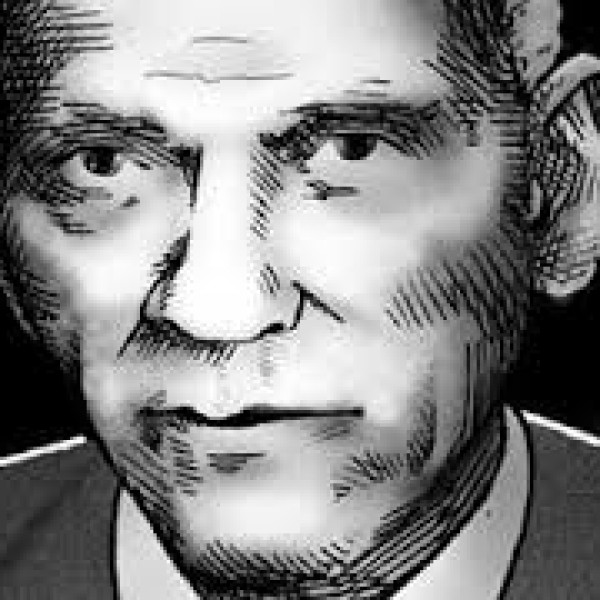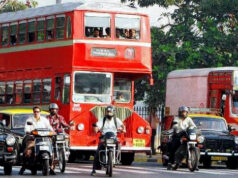The following report was based on an interview with B R Shenoy and was was published in the September 18, 1962 issue of Economic Times. The interview was subsequently published in a publication by Forum of Free Enterprise titled ‘ Why are Prices Rising?’ In the interview, B R Shenoy links inflation to over-investment and deficit financing by the state.
Professor. B. R. Shenoy, an eminent economist and Director of the Gujarat University School of Social Sciences, has attributed the spiral of rising prices to what he calls over-investment and warned that the steps contemplated by the Government of India to check the price-rise were apt to render the existing confusion worse confounded.
Analysing the Price situation and the country-wide debate on the measures to check the rising prices, Prof. Shenoy told “The Economic Times” that it was a sad commentary on the economic and monetary enlightenment of the Indian people that vested interests should be able to sell the queer notion that a “rise in prices is the very condition of economic development” and that legislative and administrative measures could restrain rising prices.
More dangerous and misleading economic untruths were not spoken, he said, and added that logic and experience had repeatedly demonstrated that price stability was an essential pre-condition of stable economic growth even as the growth of an infant into manhood was not a disease to cause an inflationary upset. Economic development at near-record rates in the EEC countries, in Japan, Hong Kong, Israel and other countries had materialised under price stability and there was no device of controlling inflation other than putting a stop to it.
In reply to a question as to why the prices were rising after a decline of 3.4 per cent in 1961-62, Prof. Shenoy said the current phase of the price-rise, which began in May 1955, and the spurt in prices within this phase since April 1962 should be distinguished.
Prof. Shenoy said the current phase of the price-rise was the direct outcome of our desire to “invest” resources which we did not possess. The link between such investment and the price-rise could be easily seen, he said. “In- vestment beyond the available resources takes the form of budget deficits. The deficits are covered by printing money, part of which goes to commercial banks from the contractors or others who receive them, and the banks add to the finance they provide-through loans, advances, discounts and overdrafts for investments in the Private Sector. Over-investment thus spreads from the Public Sector to the Private Sector.
“Meanwhile, as over-investment cannot add to the available physical resources, it cannot add to the flow of the national product either. The expansion of money ensuing from over-investment will, therefore, outpace the output and a price-rise will emerge inevitably. This explains the expansion of money by 60 per cent from 1954-55 to 1961-62, while the national product rose during the period only by 27 per cent. As a result prices rose by 34 per cent during the interval,” he said.
Replying to a series of questions, Prof. Shenoy explained the 3.4 per cent fall in prices in 1961-62 by saying that the expansion of money during the year, resulting from over-investment on the Plan did not all remain in circulation. Most of the inflationary funds flowed back into the Reserve Bank in payment for the foreign exchange being drawn from the general purpose foreign aid. The amount of the utilised foreign aid during the year was Rs. 344 crores and the largest bulk of it was general purpose foreign aid. As a result, the expansion of money during the year was held down to Rs. 170 crores, which apparently fell short of the needs of the economy, the national product rising during the year by over 3 per cent.
Explaining the point further, Prof. Shenoy said foreign exchange from the general purpose aid could be sold to any party, so it could withdraw inflationary funds in circulation. Aid tied to projects concerned could not be used to withdraw from circulation inflationary funds. This also explained our eagerness for general purpose foreign aid, he said.
Analysing the spurt in prices since last April, he referred to the meetings of the Aid-India Club and said quantum of the general purpose aid was still in doubt and the country, due to pressure for foreign exchange resulting from over-investment persisting, was drawing on currency reserves to the utmost possible extent. The result was that the inflationary moneys issued out through over-investment remained in circulation and drove prices up. During the 4 months ending August 18, 1962, the price index had risen by 7.2 per cent to 131.7 (1952-53 as 100). This amounted to an annual rate of increase of 19 per cent, which was an all-time record, the previous high being 11.2 per cent in 1955-56.
Analysing the slump in the share market in the background of inflation, Prof. Shenoy said that the country’s Plan depended on foreign aid to a dangerous extent. The scarcity of utilisable foreign aid had lowered industrial activity, through the short supply of raw materials and accessories. The adverse effects of this on production, in the context of rising production costs. were apt to reduce profits and dividends. A slump in share prices was a natural result. He linked the sharp fall in January 1962 of the “Economic Times” index of ordinary share prices to the second adjournment of the Aid-India Club meeting, and said that the factor had been reinforced by the Chinese border incidents.
Agreeing to a suggestion that the shifting of the projects aid to general purpose aid might provide a temporary relief both from the price-rise and the share-market slump, he said that the root cause, which was the futile and self-damaging effort to invest non-existent resources, should be removed.
“If we must have orderly and stable development. we must first put a stop to this strange pursuit. The corrective to boiling water–rising prices–is to remove from underneath the fire of deficit budgeting: to pour cold water–foreign aid–can lower the temperature only temporarily. If aid -fell short of inflation, prices will resume their uptrend,” he said.
To access the complete piece, click here. Visit indianliberals.in for more works by Indian Liberals dating back to the 19th Century.
Post Disclaimer
The opinions expressed in this essay are those of the authors. They do not purport to reflect the opinions or views of CCS.






